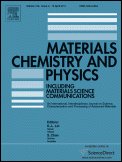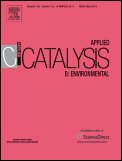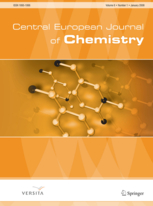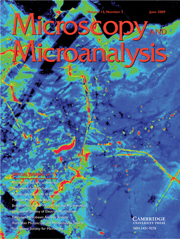
2009

Štengl, V.; Bakardjieva, S.; Murafa, N., Preparation and photocatalytic activity of rare earth doped TiO2 nanoparticles. Materials Chemistry and Physics 2009, 114 (1), 217-226.
Abstract: A one-step, a one-pot, no post-synthesis calcination and no sol–gel synthesis was used for preparation of rare earth doped visible-light sensitive titania. This method is easy transferable to industrial conditions, is ecologically friendly and make it possible to production of low-cost photocatalytic pigment. The products were characterized by all common techniques (X-ray diffraction (XRD), BET and porosity, scanning electron microscopy (SEM) and high resolution transmission electron microscopy (HRTEM), UV/VIS spectra). The photocatalytic activity of the prepared samples was assessed by the photocatalytic decomposition of Orange II dye in an aqueous slurry under irradiation of 254, 365 and 400 nm wavelength. The rare earth (La, Ce, Pr, Nd, Sm, Eu, Dy, Gd) for doped titania were used, the best photocatalytic properties in visible light have samples doped with Nd3+ ions (k = 0.0272 min−1 for UV and 0.0143 min−1 for visible light). Link
 Houšková, V.; Štengl, V.; Bakardjieva, S.; Murafa, N.; Tyrpekl, V., Efficient gas phase photodecomposition of acetone by Ru-doped Titania. Applied Catalysis B - Environmental 2009, 89 (3-4), 613-619.
Houšková, V.; Štengl, V.; Bakardjieva, S.; Murafa, N.; Tyrpekl, V., Efficient gas phase photodecomposition of acetone by Ru-doped Titania. Applied Catalysis B - Environmental 2009, 89 (3-4), 613-619.
Abstract: Nanocrystalline titania particles doped with ruthenium oxide have been prepared by hydrolysis of TiOSO4 in aqueous solutions in the presence of urea. The synthesized particles were characterized by X-ray diffraction (XRD), Scanning Electron Microscopy (SEM), High Resolution Transmission Electron Microscopy (HRTEM), Selected Area Electron Diffraction (SAED) and surface area (BET) and porosity determination (BJH). The photocatalytic activity of Ru-doped titania samples was determined in the gas phase by decomposition of acetone during irradiation at 365 nm and 400 nm. The Ru-doped titania samples demonstrated enhanced photocatalytic activity under visible light. Ruthenium oxide causes the anatase to rutile transformation to occur at lower temperatures and decreasing of band-gap energy of Ru-doped samples. Link
 Mattsson, A.; Lejon, C.; Štengl, V.; Bakardjieva, S.; Opluštil, F.; Andersson, P. O.; Österlund, L., Photodegradation of DMMP and CEES on zirconium doped titania nanoparticles. Applied Catalysis B-Environmental 2009, 92 (3-4), 401-410.
Mattsson, A.; Lejon, C.; Štengl, V.; Bakardjieva, S.; Opluštil, F.; Andersson, P. O.; Österlund, L., Photodegradation of DMMP and CEES on zirconium doped titania nanoparticles. Applied Catalysis B-Environmental 2009, 92 (3-4), 401-410.
Abstract: The structure and photocatalytic activity of Zr doped TiO2 nanocrystallites with a varying Zr content between 0 and 15 wt% prepared by an efficient and environmentally benign method has been studied by vibrational spectroscopy, TEM and XRD. It is shown that the presence of Zr4+ ions stabilizes the anatase structure and delays phase transformation to rutile upon annealing as well as retarding grain coarsening. All TiO2 samples up to 13 wt% Zr doping concentration show better or similar photoreactivity compared to P25 (Degussa) for decomposition of adsorbed 2-chloroethyl ethyl sulphide (CEES) and dimethyl methylphosphonate (DMMP) in synthetic air at room temperature. The most efficient sample for photodegradation of both CEES and DMMP is shown to be titania doped with 6.8 wt% Zr. The photodegradation of CEES is faster than DMMP under the same experimental conditions. On the undoped TiO2 sample urea residues are detected spectroscopically. Much less is detected on the Zr doped samples. Mode resolved in situ FTIR surface spectroscopy enables distinction of CEES or DMMP, decomposition products as well as the influence of residues from the particle synthesis. This facilitates extraction of intra-comparable reaction rates. Possible explanations for the improved reactivity of the Zr doped titania are discussed. Link
 Österlund, L.; Štengl, V.; Mattsson, A.; Bakardjieva, S.; Andersson, P. O.; Opluštil, F., Effect of sample preparation and humidity on the photodegradation rate of CEES on pure and Zn doped anatase TiO2 nanoparticles prepared by homogeneous hydrolysis. Applied Catalysis B-Environmental 2009, 88 (1-2), 194-203
Österlund, L.; Štengl, V.; Mattsson, A.; Bakardjieva, S.; Andersson, P. O.; Opluštil, F., Effect of sample preparation and humidity on the photodegradation rate of CEES on pure and Zn doped anatase TiO2 nanoparticles prepared by homogeneous hydrolysis. Applied Catalysis B-Environmental 2009, 88 (1-2), 194-203
Abstract: Pure titania and titania doped with Zn2+ were prepared by homogeneous hydrolysis in aqueous solution with urea and thioacetamide as precipitating agents. The materials were characterized by XRD, TEM, BET and BJH analysis, which show microporous, nanaocrytsalline anatase phase titania in the size range 4–5 nm and specific surface area 200–500 m2/g. Adsorption and photocatalytic decomposition of 2-chloroethyl ethyl sulfide (CEES) was measured on dry and water pre-covered titania surfaces, respectively. Illumination with UV light leads to rapid decomposition of CEES on all samples resulting in formation of surface bound ethoxy, chloro ethoxy, aldehydes, acetone and carboxylates. Volatile sulphur moieties (SO) and isocyanate (Ti-NCO) are observed which is related to the synthesis methods employed. A procedure for removing residual synthesis products from the particles was devised and the intrinsic photodegradation rate was determined on the purified samples and compared with the as prepared samples. The photodegradation rate is notable higher for the purified TiO2 nanoparticles prepared by the urea route with respect to the “as prepared”. In the case of the Zn doped TiO2 samples a diminution in photodegradation rate is observed after purification. The results are correlated with the amount of volatile residual synthesis products present on the different particles. All materials have comparable or higher photo-reactivity than P25 (Degussa). On a humidified surface, the effects from synthesis residues, in particular volatile sulphur moieties, are reduced due to reactions with water and improved photoreaction rates for all samples are observed. Link
 Štengl, V.; Ageorges, H.; Ctibor, P.; Murafa, N., Atmospheric plasma sprayed (APS) coatings of Al2O3-TiO2 system for photocatalytic application. Photochemical & Photobiological Sciences 2009, 8 (5), 733-738.
Štengl, V.; Ageorges, H.; Ctibor, P.; Murafa, N., Atmospheric plasma sprayed (APS) coatings of Al2O3-TiO2 system for photocatalytic application. Photochemical & Photobiological Sciences 2009, 8 (5), 733-738.
Abstract: The goal of this study is to examine the photocatalytic ability of coatings produced by atmospheric plasma spraying (APS). The plasma gun used is a common gas-stabilized plasma gun working with a d.c. current and a mixture of argon and hydrogen as plasma-forming gas. The TiO2 powders are particles of about 100 nm which were agglomerated to a mean size of about 55 μm, suitable for spraying. Composition of the commercial powder is 13 wt% of TiO2 in Al2O3, whereas also in-house prepared powder with the same nominal composition but with agglomerated TiO2 and conventional fused and crushed Al2O3 was sprayed. The feedstock materials used for this purpose are α-alumina and anatase titanium dioxide. The coatings are analyzed by scanning electron microscopy (SEM), energy dispersion probe (EDS) and X-ray diffraction. Photocatalytic degradation of acetone is quantified for various coatings. All plasma sprayed coatings show a lamellar structure on cross section, as typical for this process. Anatase titania from feedstock powder is converted into rutile titania and α-alumina partly to γ-alumina. Coatings are proven to catalyse the acetone decomposition when irradiated by UV rays. Link
 Houšková, V.; Štengl, V.; Bakardjieva, S.; Murafa, N.; Tyrpekl, V., Photocatalytic properties of Ru-doped titania prepared by homogeneous hydrolysis. Central European Journal of Chemistry 2009, 7 (2), 259-266.
Houšková, V.; Štengl, V.; Bakardjieva, S.; Murafa, N.; Tyrpekl, V., Photocatalytic properties of Ru-doped titania prepared by homogeneous hydrolysis. Central European Journal of Chemistry 2009, 7 (2), 259-266.
Abstract: Nanocrystalline titania particles doped with ruthenium oxide have been prepared by the homogenous hydrolysis of TiOSO4 in aqueous solutions in the presence of urea. The synthesized particles were characterized by X-ray diffraction (XRD), Scanning Electron Microscopy (SEM), High Resolution Transmission Electron Microscopy (HRTEM), Selected Area Electron Diffraction (SAED) and Nitrogen adsorption-desorption was used for surface area (BET) and porosity determination (BJH). The photocatalytic activity of the Ru-doped titania samples were determined by photocatalytic decomposition of Orange II dye in an aqueous slurry during irradiation at 365 nm and 400 nm wavelengths. Link

Štengl, V.; Bakardjieva, S.; Murafa, N.; Opluštil, F.; Österlund, L.; Mattsson, A.; Andersson, P. O., Warfare agents degradation on zirconium doped titania. Microscopy and Microanalysis 2009, 15 (Supplement S2), 1038-1039
Murafa, N.; Štengl, V.; Houšková, V., Monodispersed spindle-like particles of titania. Microscopy and Microanalysis 2009, 15 (Supplement S2), 1036-1037.
Murafa, N.; Štengl, V.; Šubrt, J.; Bakardjieva, S.; Houšková, V., Microscopic investigation of the morphology of various active nanostructures. Microscopy and Microanalysis 2009, 15 (Supplement S2), 1336-1337.
Kontakt
Ústav anorganické chemie AV ČR v.v.i.
250 68 Husinec-Řež
266 172 202
stengl@iic.cas.cz; stengl@me.com